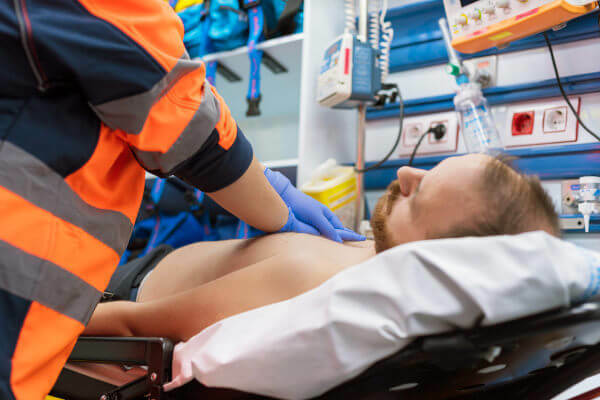Cardiorespiratory arrest is an event defined as the interruption of the mechanical activity of the heart and the activity respiratory. As the heart's mechanical activity stops, the circulation signals also stop. This event is serious and it can lead to death, being essential, therefore, to quickly ensure the resumption of circulation and oxygenation.
Read too: 10 leading causes of death in the world
Characteristics of cardiorespiratory arrest
Cardiorespiratory arrest is characterized by the presence of the following events:
Sudden interruption of heartbeat
Sudden interruption of breathing movements
Loss of consciousness
These events are responsible for prevent tissues from receiving oxygen and nutrients suitable for its operation. Failure to reverse the condition quickly may result in tissue damage. It is important to point out that the brain suffers serious damage if it remains without oxygen for more than five minutes, with the appearance of irreversible injuries.
It is unusual for cardiorespiratory arrest to occur as an unexpected and sudden event. What is noticed is that, little by little, the patient will show deterioration of their respiratory and circulatory functions. In patients who are hospitalized, before cardiorespiratory arrest, there is a worsening of the individual's condition. When this change is noticed, measures can be taken in order to prevent the stoppage from occurring.

Rescue in case of cardiorespiratory arrest must be quick to increase the individual's chances of survival.
In adult patients, the main cause of cardiopulmonary arrest is the Coronary disease, that happens as a result of the formation of atherosclerotic plaques, which hinder or prevent the passage of blood. already the Mondaycause most frequent is the trauma. In the kids, in turn, cardiorespiratory arrests are more frequent due to electrolyte disturbances (loss of large amounts of liquids and electrolytes) and acid-basic.
Read too: Coma: state of total unconsciousness
Signs that indicate a cardiorespiratory arrest
In case of cardiorespiratory arrest, it is essential that the diagnosis is made quickly so that the proper treatment procedure can be performed. Between the signalsinstopcardiorespiratory that can be used for diagnosis are:
absence of pulse
absence of breathing movements
unconsciousness
blue-purple coloration of the skin and mucous membranes (cyanosis)
Cardiorespiratory arrest treatment
When a patient has cardiorespiratory arrest, the cardiopulmonary resuscitation maneuvers. These comprise a series of techniques and procedures aimed at maintaining blood circulation, thereby allowing tissue oxygenation and adequate nutrient transport.
Cardiopulmonary resuscitation can be performed by Health professionals and even by lay people. It is also worth noting that this procedure can be done, in this sense, outside or inside the hospital environment.
Resuscitation, if done in a manner fast, contributes significantly to the survival of victims. An important point to be highlighted is that a cardiorespiratory arrest, without any intervention, can cause brain damage in about five minutes. In about 10 minutes, you can check the brain death.

The defibrillator is equipment used in cases of cardiorespiratory arrest.
Given the urgency of treatment, the basic support actions must be performed properly for advanced support to be effective. Basic life support (SBV) is nothing more than an initial sequence of actions. In the case of cardiorespiratory arrest, the steps of care in BLS are represented by the primary CABD, where the letters correspond to:
Ç - check responsiveness and breathing, call for help, check pulse and (start) compressions
THE - airway opening
B - good ventilation
D - defibrillation
Another point that favors the survival of patients who had cardiorespiratory arrest is the place where it occurs. In hospital environment, for example, there are more chances of survival than in another environment, such as at home or at work. Inside hospitals, there are greater chances of success in treatment for those under intensive care, since there is greater monitoring of patients in these places.
Know more:First aid: what are they, procedures, techniques
Sequelae of cardiorespiratory arrest
As we know, cardiorespiratory arrest is characterized by interruption of heartbeat and breathing. This event is serious and has a high mortality rate. For those who survive it, the presence of sequelae is common, especially neurological, due to lack of irrigation in the brain.
damagecerebralirreversible can be seen in patients who did not receive adequate help within the first five minutes.
By Ma. Vanessa Sardinha dos Santos
Source: Brazil School - https://brasilescola.uol.com.br/doencas/parada-cardiorrespiratoria.htm
